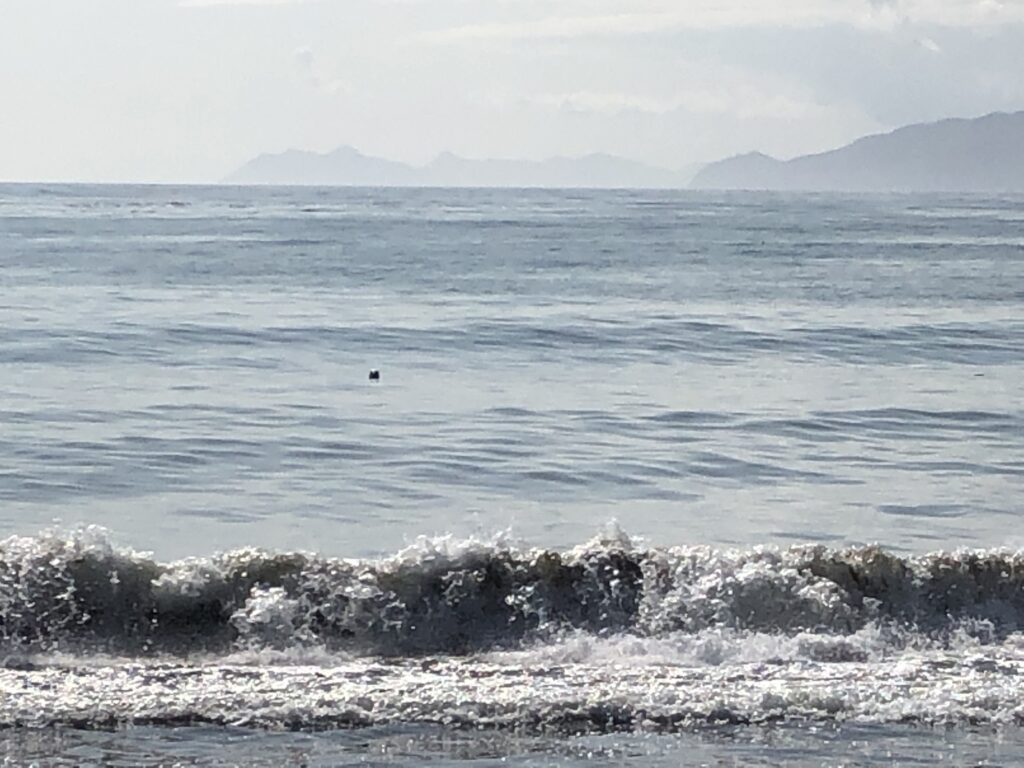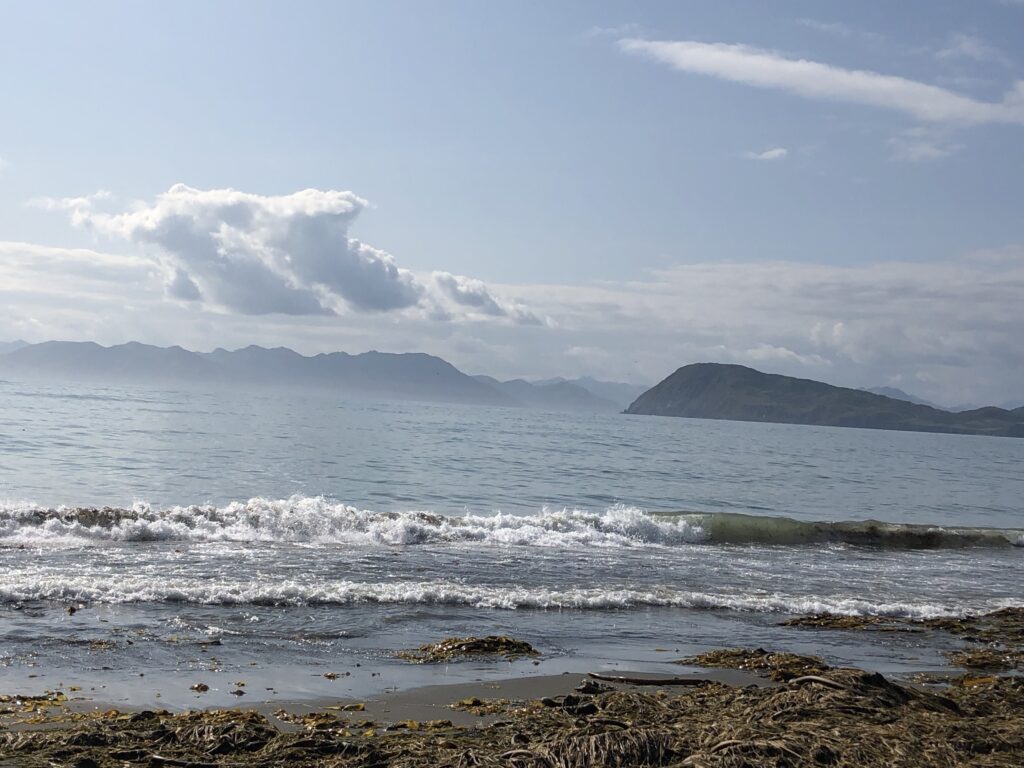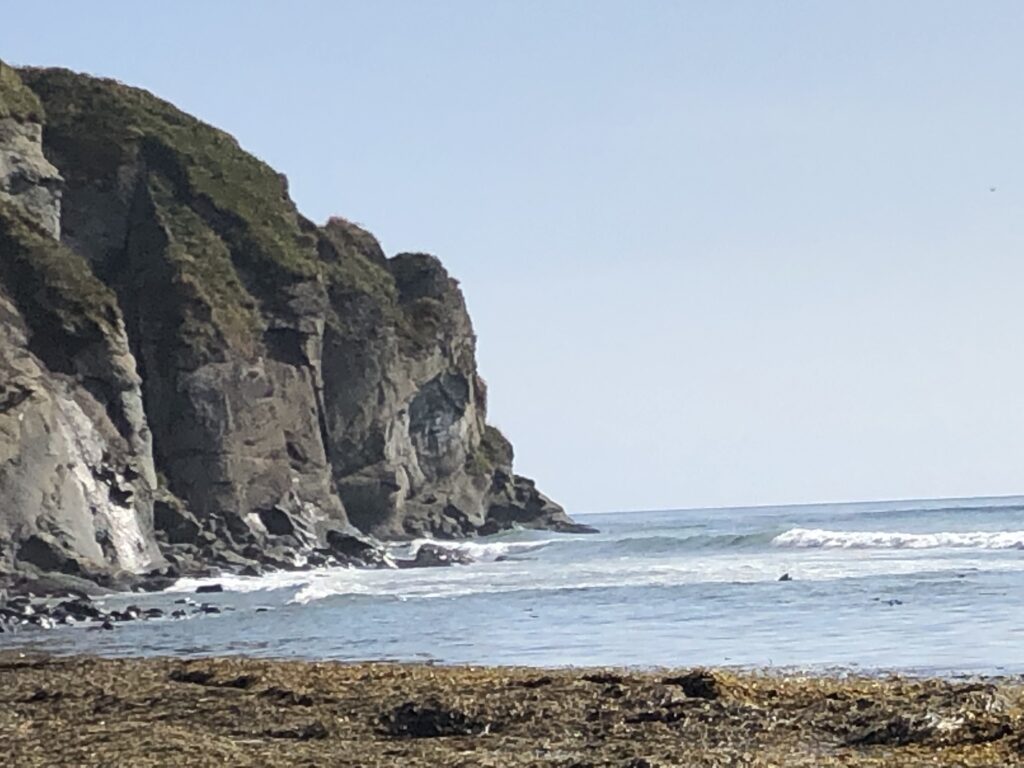It is easier to get to Alaska from the Pacific northwest than it is from Albuquerque. Since we were in Portland, we got my annual companion fair on Alaska Airlines (which also flew us to Hawai’i on Bob’s companion fair in February), and headed north. What a wonderful treat and beautiful place to explore.
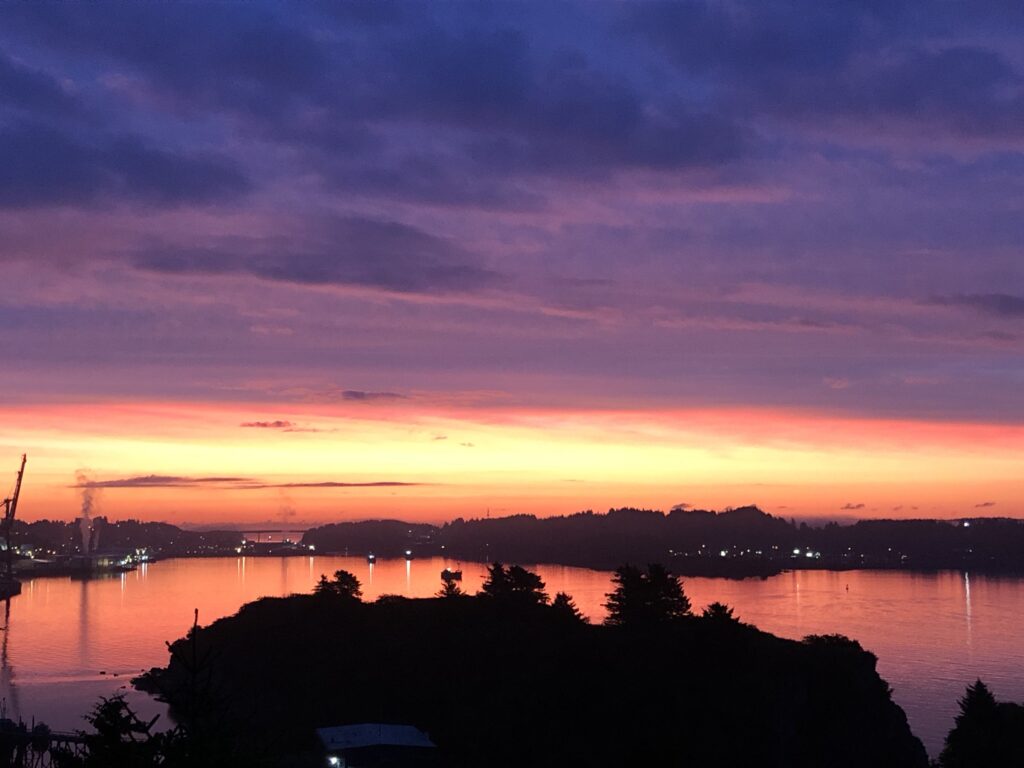
To get to Kodiak, you have to go through Anchorage. The airport there is surprisingly interesting. It has a beautiful display of Native Alaskan art that is well worth the visit. We also had a really good lunch and really good beers at the airport branch of Silver Gulch (based in Fairbanks, http://www.silvergulch.com/).
We had a tremendous advantage for our visit in that my college roommate and her husband have lived on Kodiak for nine years. That gave us a place to stay and built-in tour guides! Rich works for the Coast Guard as a civilian attorney and Voni, a Drake University Journalism School graduate (like me!), is an aspiring Christian suspense novelist. They have a lovely home nestled in suburban Kodiak, and since there aren’t many roads to travel, they know them all well.
Our first evening in town, we drove out to White Sand Beach — where the road ends! — and walked around the cove. Dead salmon had washed up on the beach, and the nearby seagulls were so full they weren’t even sniffing at them, much less eating them. We saw a beautiful kingfisher, and many salmon jumping in the stream, as they tried to make their way up for spawning. The fisherfolks were having a good night.
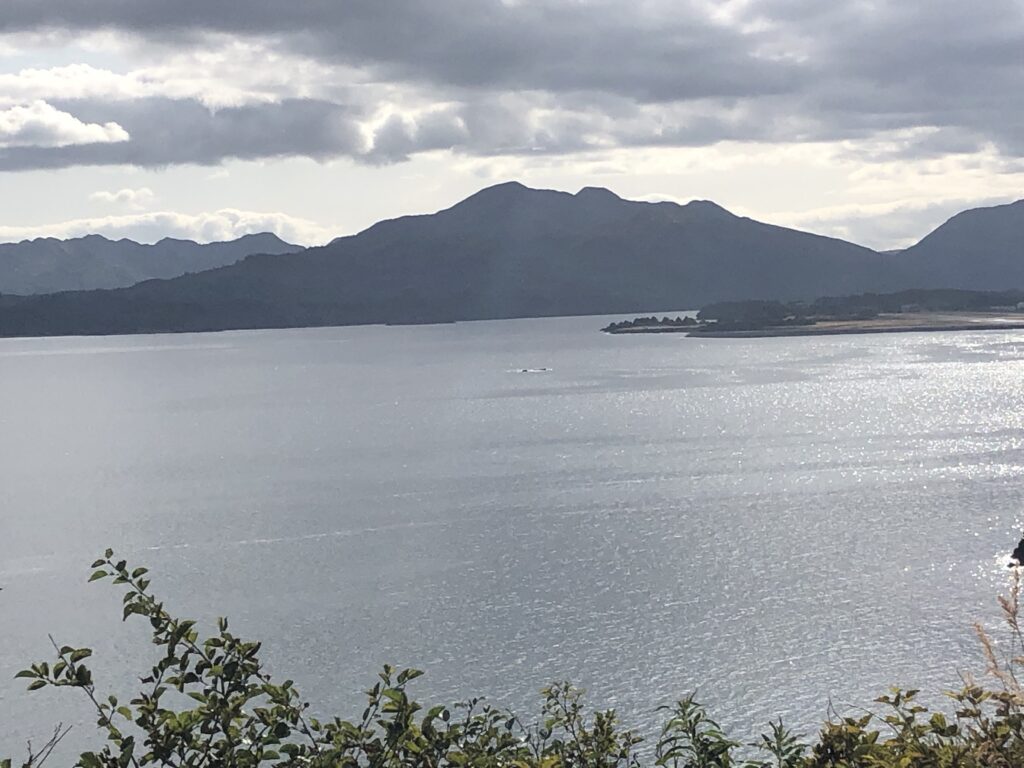
After the beach, we went for dinner at Hana, one of Kodiak’s more upscale restaurants, built in the historic power plant and with views of the channel between Kodiak and Near Island (such a clever name). We were treated to seals fishing in the channel, which was great fun to watch, once we figured out what they were.
The next morning, we had a leisurely breakfast at Monk’s Rock Coffee House and Bookstore, a hip sort of place that includes a unique look into Kodiak’s history. The food was plentiful and delicious, and coffee is only 10 cents on Wednesday morning, the morning we happened to be there.
Next, we visited the Kodiak Military Museum, built in an old bunker overlooking the ocean. The site is stunning. The volunteers are among the most enthusiastic I have met at any museum anywhere. The history is broad. I’m embarrassed, as a World War II historian, to say how little I knew about Alaska’s role during the war. Two of the Aleutian Islands were actually occupied by the Japanese. Alaska was a territory, not a state, at the time, but still, it seems like something we should know about.
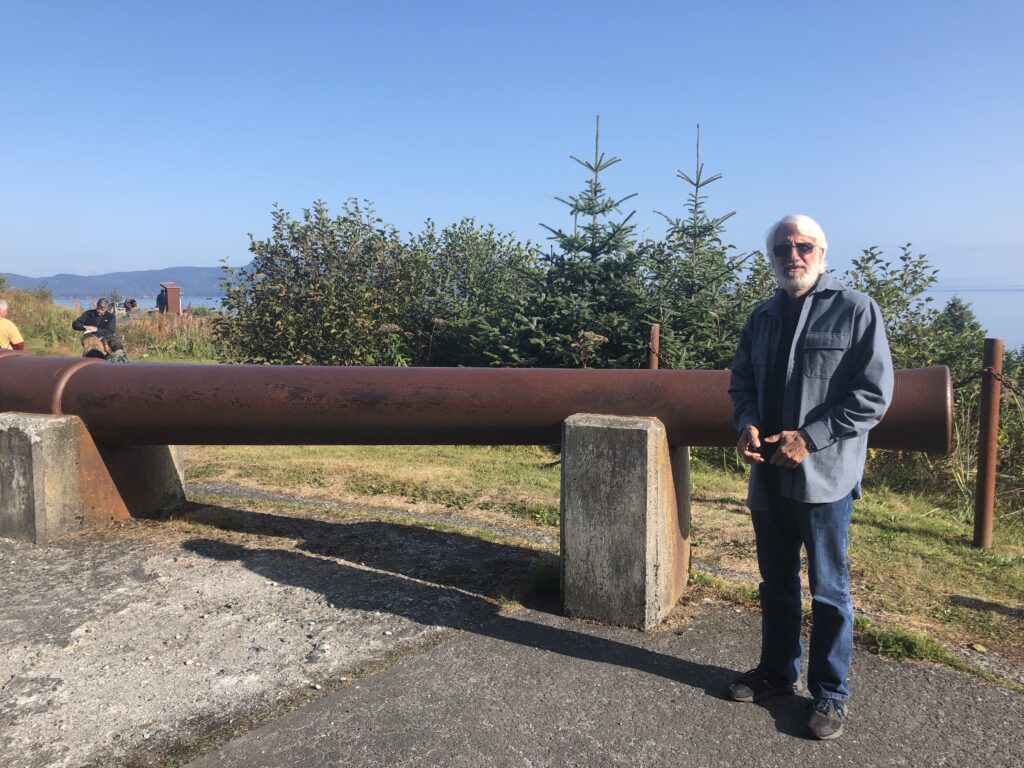
Bob at an 8-inch gun 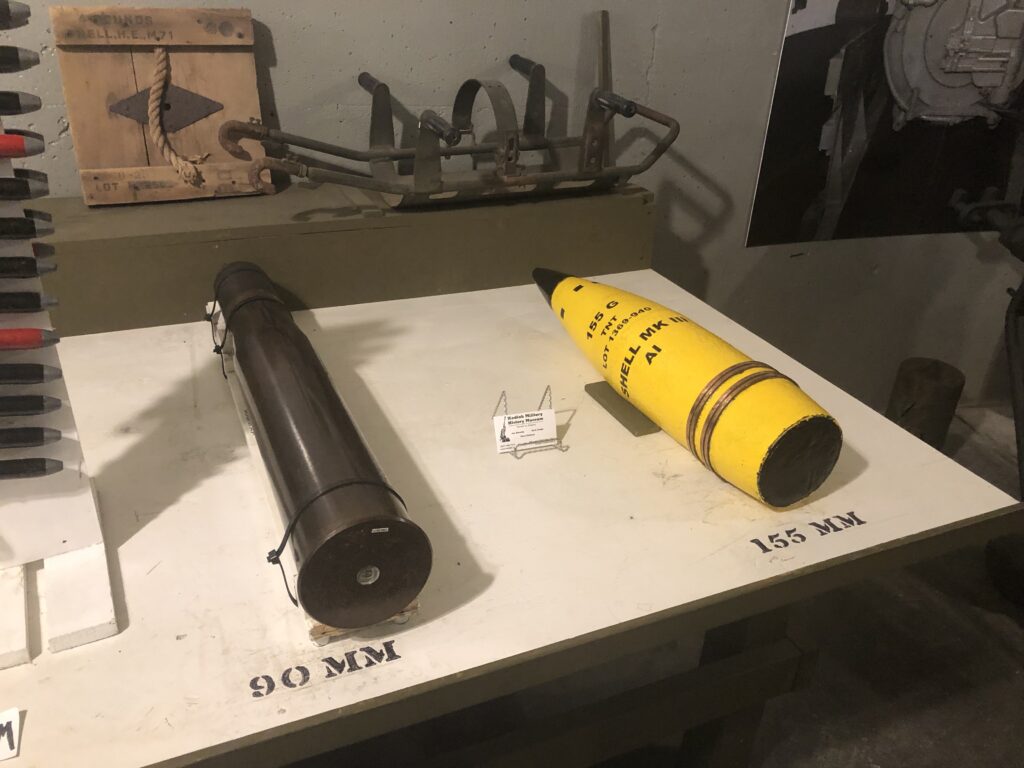
Military stuff 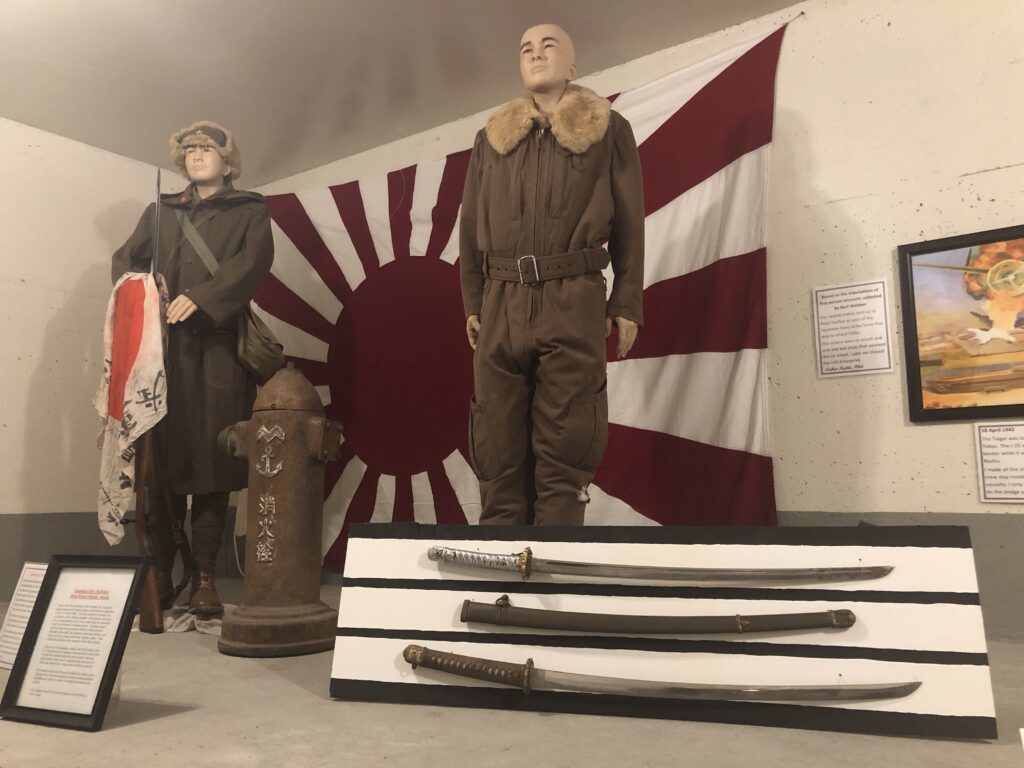
Japanese WWII items
The museum explains the history of the site, big searchlights and big guns watching for enemy ships. Although shots were never fired from Kodiak, the soldiers there were integral to the defense of the homeland. The museum also sports a display on Alaska National Guardsman who participated in Operation Iraqi Freedom. It included an (authorized) chair taken from one of Saddam Hussein’s palaces.
After the museum, we drove toward the west side of the island, stopping for lunch at another great place, Java Flats, http://www.javaflats.com/. The soups, salads, and sandwiches are generous in size, and the massive cookies are to die for. Definitely get one to share!
We followed the windy Pasagshak Road, with its beautiful views of ocean and mountains, out to Fossil Beach. A large herd of bison, introduced to the island for farming and still causing concern with their tramping over state lands, blocked the road for a short time. We also admired all the buildings and technology visible at the Pacific Spaceport Complex, a dual-use commercial and military spaceport owned and operated by the Alaska Aerospace Corporation.
At Fossil Beach, huge piles of kelp had washed up, brown rubbery stalks snaking in all directions. Out in the water, the visible kelp beds were home to some cute floating sea otters, once decimated by Russian fur hunters. A pair of sea lions watched us from the water as much as we were watching them from the beach.
As we looked at the magnificent mountains off in the distance, we saw a whale spout. And then another. And then another. For almost an hour, we watched a pod of what we suspect were fin whales (but could have been the resident gray whales that hang out in the area), circle around, breathe, and show off some body parts like fins and tails. It was a special treat and not, apparently, an uncommon occurrence on Kodiak.
Another treat was walking around the Kodiak Harbor, full of all sizes, colors, and types of fishing boats. The folks on these boats are brave, and they work hard, whether it’s keeping the boat clean, bringing in the catch, or repairing nets.

Kodiak National Wildlife Refuge is a 1.9-million-acre wildlife haven on Kodiak and Afognak Islands, established in 1941 by President Franklin D. Roosevelt “for the purpose of protecting the natural feeding and breeding range of the Kodiak bear.” It is where the largest bears on earth roam and eat salmon to their hearts’ content.
However, the refuge can only be reached by boat or plane. We hadn’t saved enough pennies to make that part of the trip, but we did visit the in-town visitors center for the refuge. It had an informative video about the bears and terrific displays on the island’s bears, birds, and fish. It was well worth the stop.
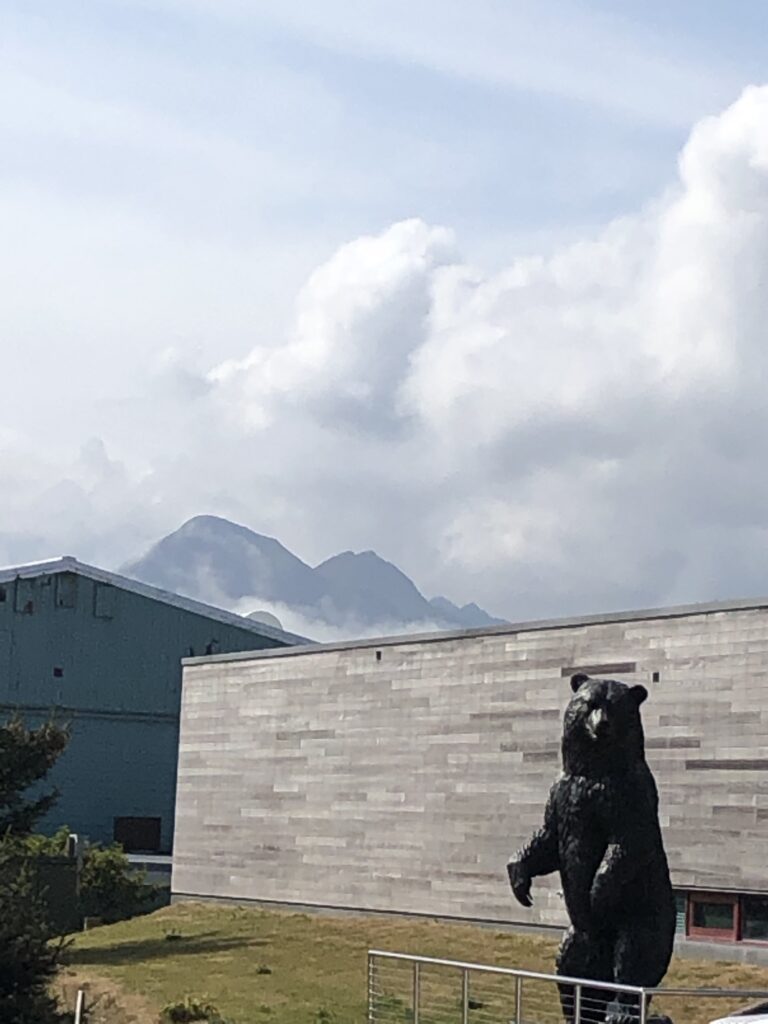
Next up was the Kodiak History Museum, https://kodiakhistorymuseum.org/. These folks were my kindred spirits, a small museum, stretching its resources, covering lots of history in a small, historic building. They did it very well, with Native, Russian, and American history well represented through objects and interesting stories. We highly recommend it. (They are a member of the North American Reciprocal Museum Association, as is the Los Alamos History Museum.)

Living room display of early Alaska residents 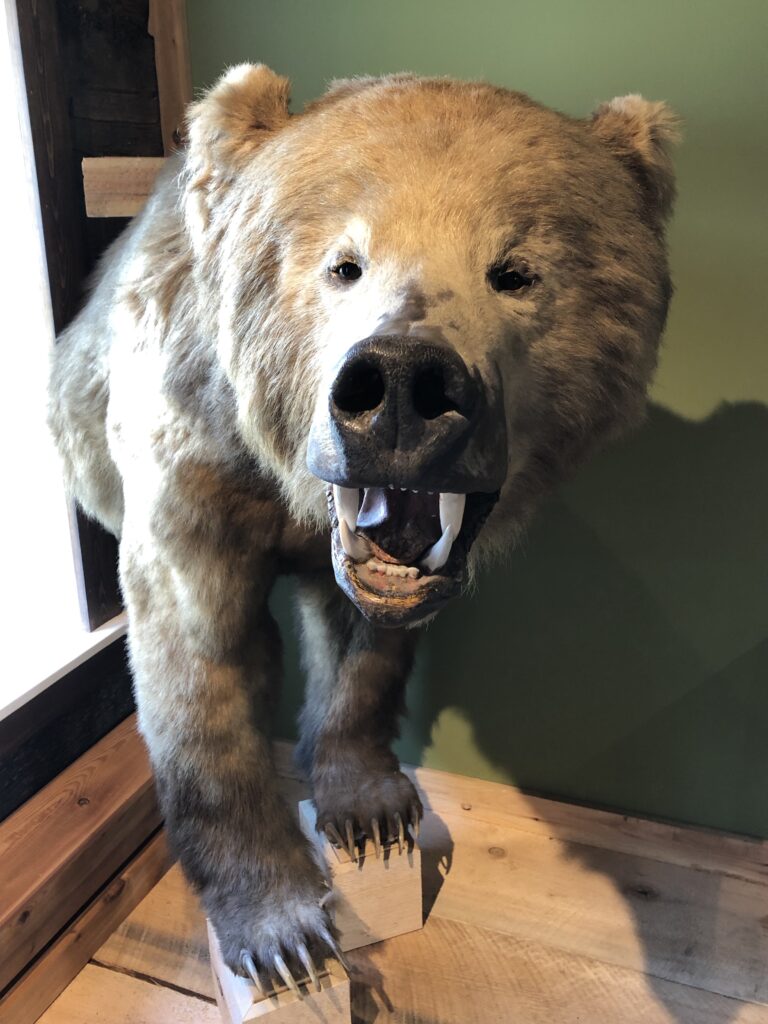
#halfbear 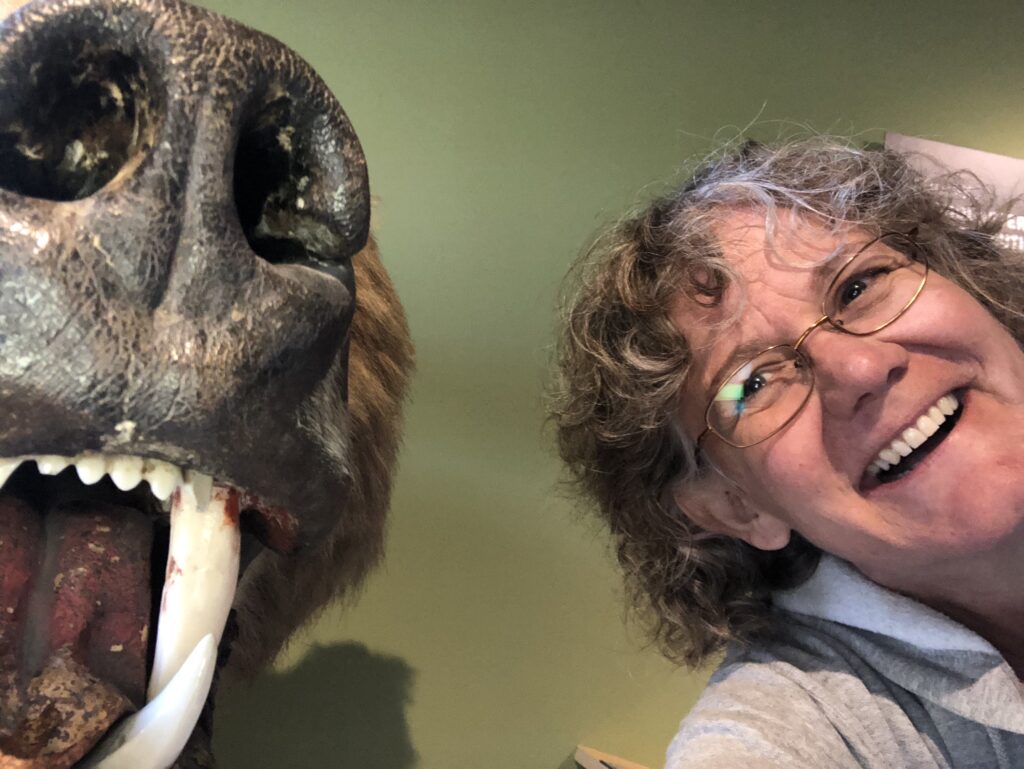
Selfie with #halfbear at #Kodiakhistorymuseum
All of this is to say, if you ever get an opportunity, go visit Kodiak, Alaska. It is gorgeous, diverse, interesting, and fun.
On the way back, we had a long layover in Anchorage, so we left the airport and Ubered downtown to the Anchorage Museum. Wow! Not only is it huge (having ConocoPhillips as a sponsor must be a really nice thing for a museum), it has some amazing exhibits. The Native Alaskan exhibits, from the Smithsonian, are particularly compelling, with stunning artifacts and fascinating stories. It’s hard to get to and from Kodiak without having a long layover in Anchorage, so we recommend the visit.
A couple of final notes: Alaska Air has lots of leg room. You can easily and fairly cheaply upgrade from the main cabin to the premium class between Kodiak and Anchorage, but only water and orange juice are served on the 42-minute flight. www.alaskair.com. Overall, it’s a great airline.
Finally, the word Kodiak is a Russian derivative of a Native Alaskan word that means island. So, Kodiak Island is redundant. Just Kodiak is okay. (We found Kodiak to be way more than okay!)
